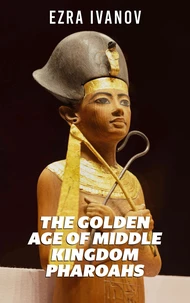As every growth of seed from seed is followed by destruction, so every birth of living flesh is followed by its death, and all that decays is regenerated by the measured courses of the gods circling in the heavens.-Hermetica: Libellus III, 4Spiritual practices are founded upon a liturgy that articulates their cosmology, philosophy, and metaphysical goals. The spiritual tradition of Egypt provides us with hundreds of examples of prayers, invocations, and litanies that were carefully recorded to be used in the Temple and tomb.
In addition to these writings, the rubrics (instructions or rules) also explain how the liturgy should be used. In the extended history of ancient Egypt, liturgical programs rarely changed. They were honored for their veracity, correctness, and power, as the ceremonial acts performed in temples and tombs were said to date back to antiquity. According to this belief, the walls of each temple record the liturgies, the daily, and seasonal festivals, and the historical antecedents or founding events of each individual Neter's sanctuary.
At Edfu, the legendary Imhotep, a sage and healer in Dynasty 3, presided over the founding ceremony of the Temple. A morning litany is also inscribed in the hall of appearances, sung by the kheneru each day to open the Temple. Holy days are recorded on calendars at Karnak, Esna, and Abydos to be observed. Overall, the timing, location, and acts responsible for spiritually maintaining the Temple determined its activity throughout the ages.
Using the solar calendar in conjunction with the following liturgy can create an annual cycle of twelve ceremonies (lru). The monthly observances are based on an orderly solar cosmogony of Heliopolis. Each Neter comprises twelve different rites (Khesu) that reflect the ancient Temple's proper protocol. Consequently, they contribute to developing a conscious, vital interface among the human, divine, and natural realms.
Each of the Iru ceremonies includes the standard Khesu rites. In addition, each ceremony includes a festival to honor the specific powers of the Neter of the season (Hebu). Depending on the time and resources available to the modern Temple, these observances may be tailored to fit the occasion.
As every growth of seed from seed is followed by destruction, so every birth of living flesh is followed by its death, and all that decays is regenerated by the measured courses of the gods circling in the heavens.-Hermetica: Libellus III, 4Spiritual practices are founded upon a liturgy that articulates their cosmology, philosophy, and metaphysical goals. The spiritual tradition of Egypt provides us with hundreds of examples of prayers, invocations, and litanies that were carefully recorded to be used in the Temple and tomb.
In addition to these writings, the rubrics (instructions or rules) also explain how the liturgy should be used. In the extended history of ancient Egypt, liturgical programs rarely changed. They were honored for their veracity, correctness, and power, as the ceremonial acts performed in temples and tombs were said to date back to antiquity. According to this belief, the walls of each temple record the liturgies, the daily, and seasonal festivals, and the historical antecedents or founding events of each individual Neter's sanctuary.
At Edfu, the legendary Imhotep, a sage and healer in Dynasty 3, presided over the founding ceremony of the Temple. A morning litany is also inscribed in the hall of appearances, sung by the kheneru each day to open the Temple. Holy days are recorded on calendars at Karnak, Esna, and Abydos to be observed. Overall, the timing, location, and acts responsible for spiritually maintaining the Temple determined its activity throughout the ages.
Using the solar calendar in conjunction with the following liturgy can create an annual cycle of twelve ceremonies (lru). The monthly observances are based on an orderly solar cosmogony of Heliopolis. Each Neter comprises twelve different rites (Khesu) that reflect the ancient Temple's proper protocol. Consequently, they contribute to developing a conscious, vital interface among the human, divine, and natural realms.
Each of the Iru ceremonies includes the standard Khesu rites. In addition, each ceremony includes a festival to honor the specific powers of the Neter of the season (Hebu). Depending on the time and resources available to the modern Temple, these observances may be tailored to fit the occasion.

 , qui est-ce ?
, qui est-ce ?